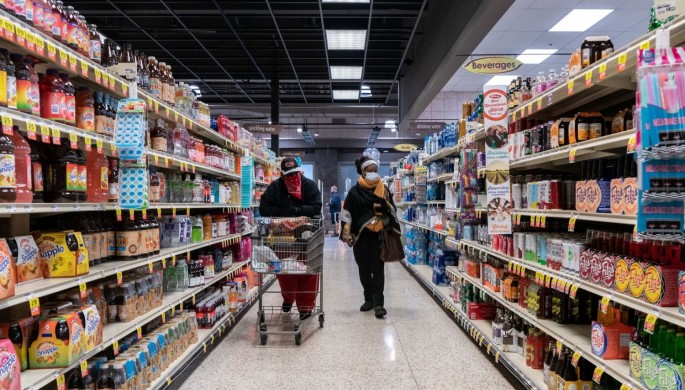U.S. producer prices increased more than expected in March, resulting in the largest annual gain in 9-1/2 years and likely marking the start of higher inflation as the economy reopens amid an improved public health environment and massive government aid.
The report from the Labor Department on Friday also showed solid gains in underlying producer prices last month. That aligned with business surveys showing rising cost pressures as strengthening domestic demand pushes against supply constraints.
Federal Reserve Chair Jerome Powell on Thursday reiterated that he believed the expected rise in inflation will be transitory and that supply chains will adapt and become more efficient. Most economists agree, citing considerable slack in the labor market.
"Beyond temporary effects, inflation is unlikely to keep accelerating given ample slack in the labor market," said Rubeela Farooqi, chief U.S. economist at High Frequency Economics in White Plains, New York.
The producer price index for final demand jumped 1.0% last month as costs increased across the board. The PPI rose 0.5% in February. In the 12 months through March, the PPI surged 4.2%. That was the biggest year-on-year rise since September 2011 and followed a 2.8% advance in February.
The year-on-year PPI was boosted as last spring's weak readings dropped out of the calculation. Prices tumbled early in the pandemic amid mandatory closures of non-essential businesses across many states to slow the first wave of COVID-19 cases.
Economists polled by Reuters had forecast the PPI would increase 0.5% in March and jump 3.8% on a year-on-year basis. The PPI report was delayed after the Bureau of Labor Statistics website crashed. The BLS, the Labor Department's statistics agency, said it was looking into the problem with the website.
Goods prices soared 1.7%, accounting for almost 60% of the increase in the PPI last month. That was the biggest increase since December 2009 and followed a 1.4% rise in February. Prices for services shot up 0.7% after gaining 0.1% in February.
Stocks on Wall Street were trading higher. The dollar gained versus a basket of currencies. U.S. Treasury prices were mostly lower.
SOLID GAINS
The government has provided nearly $6 trillion in relief since the pandemic started in the United States in March 2020, while the Fed has slashed its benchmark overnight interest rate to near zero and is pumping money into the economy through monthly bond purchases.
Powell said on Thursday that while he expected a surge in demand and bottlenecks in the supply chain as the economy reopens, "it seems unlikely that will change the underlying inflation psychology that has taken deep roots over the course of many years."
Employment remains about 8.4 million jobs below its peak in February 2020. Though vacancies have rebounded above their pre-pandemic level, competition for jobs remains stiff, limiting workers' ability to bargain for higher wages.
But some economists do not share Powell's inflation assessment, arguing that businesses have the capacity to pass on the higher production costs to consumers. Business surveys have indicated that customer inventories are at record lows and order books are full.
"The implication is that manufacturers potentially have the sort of pricing power we haven't seen in years," said James Knightley, chief international economist at ING in New York. "With greater scope to pass these price rises on to customers, the obvious implication is that risks are increasingly moving in the direction of higher CPI readings."
Fed Vice Chair Richard Clarida said on Friday if the expected jump in inflation did not reverse going into 2022, the U.S. central bank "will have to take that into account."
According to a Reuters survey, the consumer price index likely rose 0.5% in March, which would boost the year-on-year increase to 2.5% from 1.7% in February. The report is scheduled to be released on Tuesday.
Wholesale energy prices increased 5.9%, accounting for 60% of the broad-based rise in goods prices in March. Energy prices rose 6.0% in February. Food prices climbed 0.5% last month.
Excluding the volatile food, energy and trade services components, producer prices increased 0.6%. The so-called core PPI gained 0.2% in February. In the 12 months through March, the core PPI accelerated 3.1%, the biggest rise since September 2018, after increasing 2.2% in February.
In March, wholesale core goods prices shot up 0.9% after gaining 0.3% in February. The Fed tracks the core personal consumption expenditures (PCE) price index for its 2.0% inflation target, a flexible average.
The core PCE price index is at 1.5%. Some of the PPI components, which feed into the core PCE price index, rose moderately last month.
Airline tickets increased 1.1% after jumping 3.7% in February. Healthcare costs rose 0.2% after dipping 0.1% in the prior month. Portfolio management fees rebounded 1.6% after dropping 1.1% in February.



























